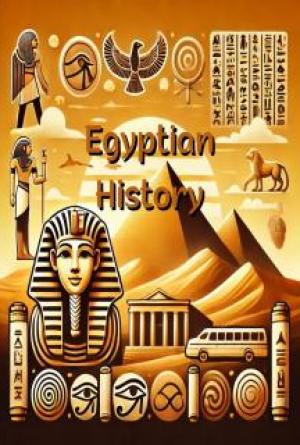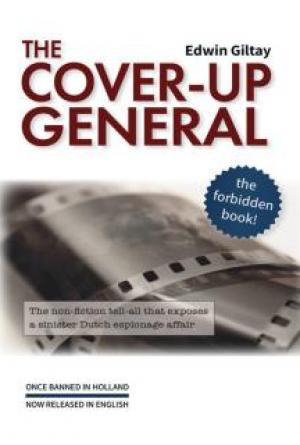FOOTNOTES:
[1] Letters of Mrs. John Adams, p. 253.
[2] It is pleasant to learn that Mr. Joseph Wharton, the owner of Walnut Grove, if proud was also benevolent, as we find his name among liberal contributors to one of the first Philadelphia almshouses.
[3] This sketch, by Major André, is in the possession of Mr. Edward Shippen, of Philadelphia.
[4] “We all know of Burgoyne’s surrender, but hardly one knows Burgoyne’s comedies, and yet there are few cleverer or more brilliant, of a second order, than ‘The Heiress,’ and ‘Maid of Oaks.’ In a letter, dated New York, June 2, 1777, he says, ‘You cannot imagine anything half so beautiful as this country. It is impossible to conceive anything so delightful. Lady Holland, in spite of her politics, would, I am sure, feel for it, if she could see the ruin and desolation we have introduced into the most beautiful and, I verily believe, happiest part of the universe.’”—World Essays: William B. Reed, pp. 176, 177.
[5] From a letter of the late Lawrence Lewis, Jr., written in 1879.
[6] It appears that this knight with the shining name and emblem had not a reputation to match them. We learn that he entered the army only to get to America, was discharged, tried to join the Colonial army, and was seized and sent to England. (German Allied Troops, 1776-1783, p. 333.)
[7] Fred. D. Stone. Pennsylvania Magazine, vol. iii. p. 336.
[8] Watson’s Annals of Philadelphia, vol. ii. p. 297.
[9] Biographical Sketch of General Anthony Wayne, Hazard’s Register, p. 389.
[10] This house was the residence of Aaron Burr at the time of his duel with Alexander Hamilton.
[11] Mrs. Robinson’s statement that a carpet was spread from the wharf for the President to walk upon was authenticated, more than sixty years later, by an eyewitness of the scene. Dr. Atlee, in 1850, while substitute-resident at the Pennsylvania Hospital in Philadelphia, met a man of eighty-two who, when he learned that the young physician was named Walter Franklin Atlee, exclaimed at the coincidence, saying that he remembered having seen General Washington come up the river in a boat, and walk on a carpet to Walter Franklin’s house, where he and Mrs. Washington were to reside.
[12] “Lady Cathcart was Lady of the Bedchamber to Queen Charlotte. Peter Pindar celebrates her at Weymouth in connection with the king’s insensate manners:
‘Cæsar spies Lady Cathcart with a book;
He flies to know what ’tis—he longs to look.
“What’s in your hand, my lady? let me know?”—
“A book, an’t please your majesty?”—“Oho!
Book’s a good thing—good thing,—I like a book.
Very good thing, my lady,—let me look.
War of America! my lady, hae?
Bad thing, my lady! fling, fling that away.”’”
Life of Major John André, by Winthrop Sargent, p. 147.
[13] See Army List, 1778.
[14] This pleasantry on the part of the French minister seems to have been taken au sérieux by certain writers as pointing to some obscurity of origin, while the fact is substantiated by various authorities that Eléonore-François-Elie, Comte de Moustier, entered the diplomatic service at eighteen, and after representing his country at several foreign courts was twice offered the position of Minister of Foreign Affairs by Louis XVI.
[15] United States Gazette, May 9, 1789.
[16] It is interesting to turn from these Republican festivities to read in the journal of a Moravian minister, written in New York during the occupation of the British, of King’s and Queen’s “Birthnight Balls,” “Coronation Day” celebrations, and rejoicings over the arrival of “His Royal Highness, Prince William Henry, the third son of our dear King, an amiable young Prince, who gave satisfaction to all who saw him.”—Diary of Ewald Gustav Schaukirk.
[17] “The old Beekman house, built by James Beekman, and standing three miles from the City Hall in New York, was the scene of a number of interesting events. During the British possession of the city it was occupied by the commander-in-chief of their army, and one room at the head of a flight of stairs was occupied by Major André the night before proceeding up the river on his ill-fated expedition to West Point, while (strange providence) but a few yards distant still stands [1848] the green house where Captain Nathan Hale, of the American army, received his trial and condemnation as a spy.”—JEROME B. HOLGATE.
[18] Evidently referring to the Bee family of S. C.
[19] Benjamin Franklin as a Man of Letters, by John Bach McMaster, p. 137.
[20] Life of Benjamin Franklin, by James Parton, vol. i. p. 263.
[21] Works of Franklin, by Jared Sparks, vol. ii. p. 9.
[22] Proceedings of the American Philosophical Society, pp. 1, 2.
[23] Charles Willson Peale’s copy of Martin’s Franklin, the original of which is owned by Mr. Henry Pratt McKean.
[24] Benjamin Franklin as a Man of Letters, by John Bach McMaster, p. 277.
[25] Dr. Wistar married, in 1798, Elizabeth Mifflin, granddaughter of John Mifflin, the Councillor.
[26] Dr. Rush himself humorously related how his patriotism had interfered with his practice, a number of persons refusing to be treated by him for yellow fever for the very good reason that he had signed the Declaration of Independence.
[27] Since writing the above, it appears upon the indisputable authority of the first charter for the city of Philadelphia, discovered in 1887 by Messrs. Edward P. Allinson and Boies Penrose, that the honored name of Edward Shippen, which so long headed the list of Philadelphia mayors, must be relegated to a second place, Humphrey Morray having been the first mayor of Philadelphia.
[28] Casper Souder’s History of Chestnut Street.
[29] The Saturday Night Parties, held during the war and for some years after, have been spoken of as direct successors of the Wistar Association. These, however, were not composed of members of the Philosophical Society, and the discussions at the meetings naturally partook of the heat and excitement of the hour, rather than of the calmer literary and scientific debate for which the Wistar Parties were designed. The only lineal descendants of the Wistar Association of 1818 are the parties recently organized, which bear the name of the great physician and scientist in whose honor they were founded.
[30] From MS. letters in possession of the Historical Society of Pennsylvania.
[31] William Penn, Jr., who grew up a gay young blade and distinguished himself by beating the watch and otherwise scandalizing the law-abiding citizens of old Philadelphia.
[32] From MS. letter, written to Miss Sarah Read, of Philadelphia, in possession of Miss F. A. Logan.
[33] Original owned by Miss Anna Peale, a grand-daughter of Charles Willson Peale.
[34] New Castle, Kent, and Sussex, which now form the State of Delaware.
[35] Evidently intended for Mrs. Mayoress, as Charles Willing was elected Mayor of Philadelphia in 1748.
[36] Mr. Richard Penn Lardner, a descendant of this Lynford Lardner, in 1878, owned the original list of the subscribers to the Assembly of 1749, and the manner in which this list and the rules for its government came into the possession of the Historical Society of Pennsylvania is in itself an interesting bit of local history. The rules were the property of Mr. Charles Riché Hildeburn, a direct descendant of John Swift. He offered to give them to the society if the old list should also be forthcoming. Mr. Lardner signified his willingness to donate the list, and the formal presentation was made by the late President of the Historical Society, the Hon. John William Wallace. Thus, after a separation of one hundred and thirty years, the old documents came together through the agency of descendants of three of the managers of the very Assembly to which they pertained.
[37] Chronicles of the Plumsted Family, by Eugene Devereux.
[38] Some of these old playing-cards, with invitations to the Assembly printed on the backs, are still in the possession of a descendant of the first Edward Shippen.
[39] This Mrs. Bingham was the mother of William Bingham, who married a daughter of Thomas Willing, whose wife, Anne McCall, may well be spoken of as “the beautiful mother of a beautiful race.”
[40] From manuscript letter in possession of the Historical Society of Pennsylvania.
[41] The name Williamina was inherited from a beautiful grandmother, Williamina Wemyss Moore.
[42] This letter was forwarded by Edward Tilghman, who was “out on his parole,” with the gauze handkerchiefs, ribbons, etc, to Mrs. Paca, born Anne Harrison, the second wife of William Paca, of Wye Island, Maryland, who was a delegate to Congress. (Pennsylvania Magazine, vol. xvi. p. 216.)
[43] This story, on the authority of Thomas Jefferson, is related by Miss Elizabeth Montgomery in her “Reminiscences of Wilmington.”
[44] Pennsylvania Magazine, vol. xvi. pp. 216, 217.







